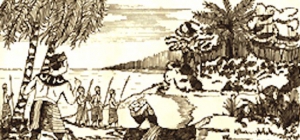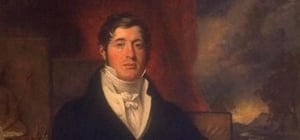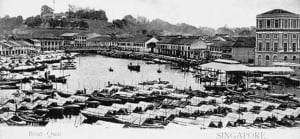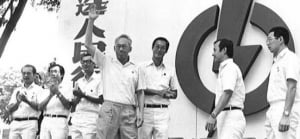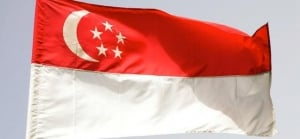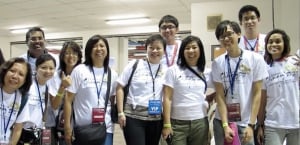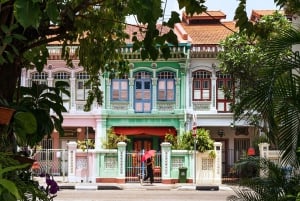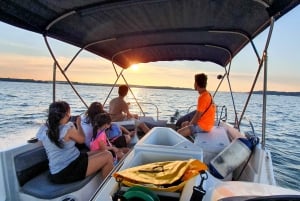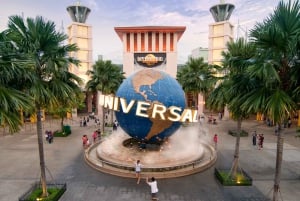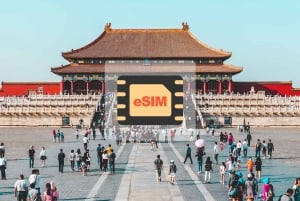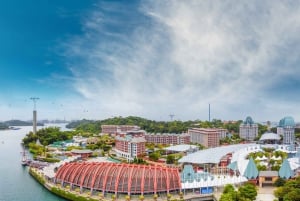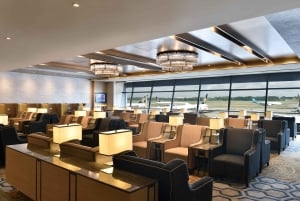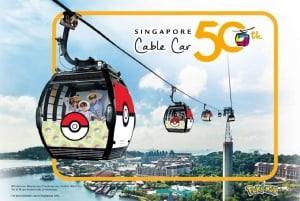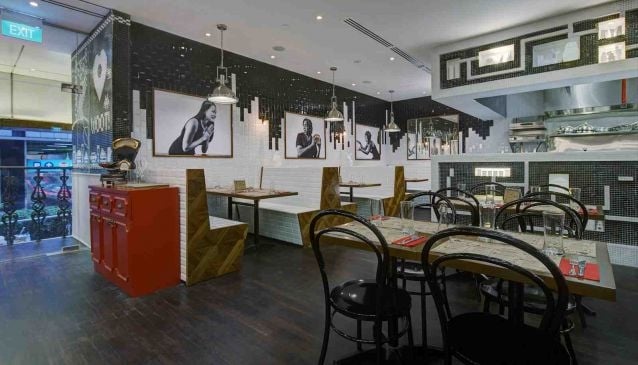History & Culture
"Lee Kuan Yew's vision, astute political judgement, and strategy turned Singapore from a trading post into the successful thriving nation that it is today, respected by others." - Tun Daim Zainuddin, Minister of Finance of Malaysia.
History
The Pre-colonisation
The name "Singapore" comes from the Malay "Singapura," which means Lion City. According to legend, Sri Tri Buana, a Srivijayan prince from Palembang (Sumatra), was searching for a suitable site for building a new city. While exploring on the island of Temasek, he spotted a strange feline with a red body, a black head and a white breast. Told that the creature may have been a lion, he believed this incident to be a favorable omen for establishing his city. The legend of the merlion - a mythical creature, half lion and half fish - was born, and the city was eventually named Singapura. Read our travel article "Singapore - the Lion City" to get the full story.
Sri Tri Buana decided to settle on Temasek, at the mouth of the Singapore River; in 1299, he founded the Kingdom of Temasek. At that time, Singapura and all of the Malay territories were Hindu-Buddhist.
During the 14th century, the city developed into an important trading port. Ships from kingdoms and empires through all of Asia anchored in its harbour. During this period, the native Orang Laut, Malay people from Sumatra, Indian traders and a few Chinese communities made up the kingdom's main ethnic groups.
In the centuries that followed, after invastions by Siamese (Thai) and Javanese troops, Singapura became a flourishing trading port of the Sultanate of Malacca, and later the Sultanate of Johor - the sources of Singapore’s Muslim heritage.
Modern history
During the second half of the 18th century, the spice trade that was once dominated by Arab merchants aroused fierce competition among the Portuguese, French, Dutch and British. At that time, the Johor Sultanate and Singapura had lost their prestige. In 1819, however, when Sir Stamford Raffles was searching for a port of call for the British Empire and landed on the island, he was convinced of its great potential as a strategic location. Through subtle trickery he arranged a signed agreement with one of the local rulers, which established Singapore as a trading post for the British East India Company.
In 1826, Singapore, Malacca and Penang became the British colony of the Straits Settlements - which in turn became a crown colony of the British Empire in 1867.
As predicted by Sir Stamford Raffles, Singapore swiftly grew in strength as a major port of call for trading ships plying the routes between Europe and East Asia. The city's prospering commerce attracted thousands of migrants from Europe, China, India and other parts of Asia, reinforcing the island's multi-ethnic character - though the local Chinese community retained predominance.
At the turn of the 20th century, Singapore became a vital part of the British Empire, though it was not spared during World War II. The Japanese attacked and then occupied the island between 1941 and 1945. They renamed it Syonan, which means Light of the South. British Prime Minister Winston Churchill called the fall of Singapore "the largest capitulation in British history." At the war's end 1945, although Britain was one of the victorious allies, its wealth and weight had been seriously weakened.
Britain's colonies began to rethink their relationships with the British crown. This period marked the emergence of local nationalisms, driving Britain to a gradual decolonization policy throughout its empire.
As a result, Singapore became a separate crown colony in 1946, and began self-governance in 1959. Lee Kwan Yew, leader of the People's Action Party (PAP), became the country’s first prime minister, and the national flag of Singapore was adopted.
The new republic
In1963, hoping for an early independence through merger and to end British colonial rule, Singapore decided to join the Federation of Malaysia, which included Malaya, Sarawak and North Borneo (known today as Sabah). However, the alliance proved to be a disaster.
Amidst recurrent disagreements between Singapore’s leaders and the federal government over financial, economic, social and politic orientations, racial tensions grew between Malay and Chinese communities resulting in violent riots in Singapore in 1964. The next year, the Federal government of Malaysia declared the expulsion of Singapore, leading the country to become an independent republic on 9 August 1965.
The future looked uncertain for Singapore: lack of natural resources and land for agriculture; a total reliance on Malaysia over water supply; a polyglot population of only 2 million; and no defense capability; All these, coupled with problems such as housing, low education and high unemployment, were the main challenges of the new republic.
Still, Lee Kwan Yew believed that Singapore’s strategic location and multi ethnicity were some valuable assets to be nurtured. Hence, extending trade and industry was the only way out. At that time English was already the leading international language and the ‘lingua franca’ for international trade. Besides, in a context of racial tensions English appeared to be a neutral language, as it didn’t belong to any of the major ethnic communities. This diplomatic reason and the economic one were sufficient to establish English as the working language besides the three other official languages of the country: Tamil, Mandarin and Malay. The different races would at last be able to communicate and work in a common language while being able to study their respective mother tongues.
Lee Kwan Yew had a vision for his country. "The vision of a state that would not only survive but also prevail by excelling" (Dr Henry A. Kissinger, US Secretary of state 1973-1975). Backed by the United Nations and the Commonwealth, Lee Kwan Yew and the PAP set out and carried out ambitious economic and social strategies to industrialise and develop the country.
Subsequently, Lee Kwan Yew accomplished the aspiration of many developing countries. He’s dream became reality.
Today although Singapore is considered as an authoritarian democracy, it is also one of the wealthiest countries in the world. A country where its citizens can enjoy descent housing, affordable health care, high standards of education and low unemployment.
Some facts
Singapore flag
The flag's design includes a crescent moon and five stars, on a red-and-white background. Red denotes brotherhood and equality, while white signifies purity and virtue. The waxing crescent moon symbolizes a young nation on the ascendancy; the five stars represent the nation's ideals of democracy, peace, progress, justice, and equality.
"We, the citizens of Singapore, pledge ourselves as one united people, regardless of race, language or religion, to build a democratic society, based on justice and equality so as to achieve happiness, prosperity and progress for our nation."
National Anthem: "Majulah Singapura" (Onward Singapore)
Words and Music by Zubir Said adopted as National Anthem in 1965.
This Anthem is sung in Malay.
|
Mari kita rakyat Singapura |
Come, fellow Singaporeans Let us progress towards happiness together May our noble aspiration bring Singapore success |
|
Marilah kita bersatu |
Come, let us unite In a new spirit Let our voices soar as one Onward Singapore Onward Singapore |
|
Marilah kita bersatu Dengan semangat yang baru Semua kita berseru Majulah Singapura Majulah Singapura |
Come, let us unite |
Former Presidents of Singapore
1965 to 1970 Yusof bin Ishak
1971 to 1981 Benjamin Sheares
1981 to 1985 Devan Nair
1985 to 1993 Wee Kim Wee
1993 to 1999 Ong Teng Cheong
1999 to 2011 S. R. Nathan
Since
2011 Tony Tan
Former Prime Ministers of Singapore
1959 to 1990 Lee Kuan Yew
1990 to 2004 Goh Chok Tong
Since
2004 Lee Hsien Loong
Singapore profile in 2012
| Area | 714 sq km |
| Capital | Singapore |
| Currency | Singapore dollar (S$) |
| Population | 5.1837m |
| Population per sq km | 7,447.2 |
| Per capita GDP | $63,050 |
| Annual growth | 4.9% |
| Unemployment rate | 2% |
Singapore's main sources of revenue in order of contribution
Manufacturing
Wholesale & Retail Trades
Business services
Financial services
Transport & storage
Construction
Singapore's ranking in 2011
| City with the best investment potential worldwide | 1 |
| Most open economy for international trade & investment | 1 |
| The world's easiest place to do business | 1 |
| Most competitive country in the world | 2 |
Culture
A multi-ethnic society
Due to its history and despite its small size, Singapore’s culture is a colourful blend of Asian and Western heritage. Singaporeans are mostly descendants of immigrants from China, the Malay Peninsula and the Indian sub-continent, who converged on the island for economic reasons, over the past centuries.
In 2011, the Chinese formed the majority, at 74% of the resident population, followed by the Malays with 13% and the Indians with 9.2 %. Although all Singaporeans communicate in English, they also speak their mother tongues and preserve their ancestors’ traditions.
The Singaporean Chinese community is made up of several dialect groups such as Cantonese, Hakka, Hokkien, Mandarin and Teochew, who usually practice Buddhist, Christian, Taoist or Confucianist religions. The Lantern Festival, Hungry Ghost Festival, Mid Autumn Festival and Chinese New Year are the main celebrations of this community.
The Malay Singaporeans, representing the second-largest ethnic group, are Muslims and speak Malay. Hari Raya is their most popular festival.
The Singaporean Indian community is mostly made up of Tamil, Malayalam, Punjabi, Hindustani and Bengalis dialect groups, and practice Hindu, Muslim, Sikh and Christian religions. They celebrate Deepavali and the Thaipusam festival.
This multi-ethnic society where Buddhist, Taoist, Muslim, Hindu, Sikh, Christian and other religious communities cohabitate peacefully, is the result of the government’s commitment to preserve racial and religious harmony, and equality of chance for all. Under Lee Kwan Yew’s paternalistic, but at the same time iron-fisted governance, Singaporeans learned to be respectful towards other cultures. From a very young age, they can interact in mixed-race schools and community activities. Additionally, public holidays celebrate some of each ethnic community’s festivals.
Today the city-island is a role model of a tolerant society, whose rich multi-ethnic heritage can be found in its cuisine, architectures, art and customs.
For further information about Singapore's history you may want to read From Third World to First (Singapore and the Asian Economic Boom) written by Lee Kuan Yew.
Writing about the book, Koffi Annan (Secretary General of the United Nations from 1997 to 2006) said: The title of this book From Third World to First expresses an aspiration of all developing countries, but so far, alas, an achievement of very few. Singapore is one of those few.



